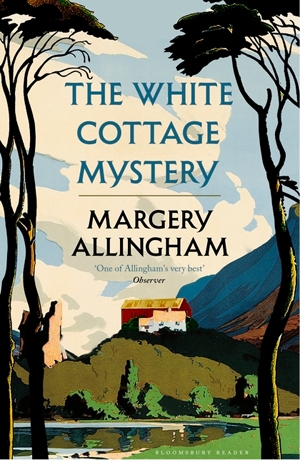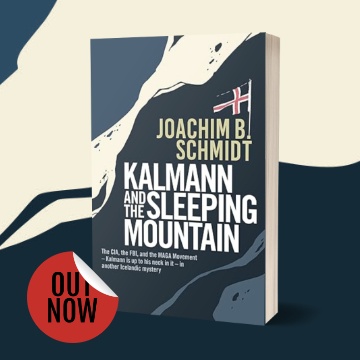 A good mystery is timeless. We truly believe that here on Crime Fiction Lover, and it’s one of the reasons that we love celebrating the classics of the genre every September. This year, as in 2014, we’re being supported in our cause by Bloomsbury Reader, a part of the Bloomsbury publishing house that shares in our view that great crime novels can span and unite the generations. Today, Miranda Vaughan Jones, editor at Bloomsbury Reader, joins us to look at how and why Golden Age crime remains important to contemporary readers. So it’s over to her…
A good mystery is timeless. We truly believe that here on Crime Fiction Lover, and it’s one of the reasons that we love celebrating the classics of the genre every September. This year, as in 2014, we’re being supported in our cause by Bloomsbury Reader, a part of the Bloomsbury publishing house that shares in our view that great crime novels can span and unite the generations. Today, Miranda Vaughan Jones, editor at Bloomsbury Reader, joins us to look at how and why Golden Age crime remains important to contemporary readers. So it’s over to her…
With advances in criminal science, GPS towers and traceable technology, crime fiction has changed irrevocably in the last century. Arguably, modern technology has upped the game – writers can introduce spoiler evidence, like unexpected DNA matches or incriminating phone records, that readers cannot have deduced themselves. But does this make us yearn for a time when, as a reader with no forensics lab to consult, you only knew as much as the detective on the case, with everyone on the same playing field?
The classic crime novel has one predominant rule at the forefront – the reader must have equal opportunity with the character solving the mystery. Authors must provide enough clues, and all clues must be available to the reader.

Golden Age author SS Van Dine.
So self-aware was this formulaic approach that, during the 1920s, authors proposed rules and guidelines for the game. SS Van Dine developed the Twenty Rules for Writing Detective Stories – which include not playing tricks on the reader (other than those played legitimately by the criminal on the detective himself), no love interests, no solutions through séances and the supernatural, and no final deduction that the death was an accident or suicide. It must be good old fashioned murder, and it must not contain anything that can’t be qualified or quantified outside of the pages of the book.
This set of strictures for the genre has a notion of collaboration, of fair play, between author and reader. It keeps the focus on plot and puzzles, on clever and intriguing storylines, unfussy and undistracted, with the occasional sense of fun through accessories like floor plans, maps, and timetables. The appeal of Golden Age fiction is the challenge of the intellectual game – to solve the crime ahead of the detectives in a rational, deductive process.
It is for this reason that the novel’s setting is so integral – why events usually take place in rural or village locales – landscapes that are self-contained therefore limiting the cast to a manageable number of suspects, and cordoning off a controllable area around the crime scene.
 But there was another more psychological reason writers chose to confine this microcosm of action, which was dictated by the instability of the times in which the genre became popular. During the aftermath of World War I and the period of the Great Depression, people wanted a return to order and happier times. The detective novel was a welcome, participatory distraction, and also provided a model of sense and stability, since, at the end of a Golden Age novel, all is explained, all problems solved.
But there was another more psychological reason writers chose to confine this microcosm of action, which was dictated by the instability of the times in which the genre became popular. During the aftermath of World War I and the period of the Great Depression, people wanted a return to order and happier times. The detective novel was a welcome, participatory distraction, and also provided a model of sense and stability, since, at the end of a Golden Age novel, all is explained, all problems solved.
Coming full circle, the lack of modern sciences in Golden Age fiction creates a ‘suspended-in-time’ aspect; the plot reflects specific social changes unique to this era, and characters are caught up with those cultural and social values important in the time it was written.
The resuscitation of these novels today creates a canon for the classic crime genre, and preserves the journey from the foundations, to the modern mutations of crime fiction.
 At Bloomsbury Reader, two of our most prestigious Golden Age Crime authors are Margery Allingham and Edmund Crispin. Dubbed the ‘queen of crime’, Margery Allingham is JK Rowling’s favourite Golden Age author, and Agatha Christie noted that she ‘stands out like a shining light’.
At Bloomsbury Reader, two of our most prestigious Golden Age Crime authors are Margery Allingham and Edmund Crispin. Dubbed the ‘queen of crime’, Margery Allingham is JK Rowling’s favourite Golden Age author, and Agatha Christie noted that she ‘stands out like a shining light’.
Edmund Crispin’s Gervase Fen predates the most celebrated Oxford detective – the immortal Inspector Morse – by some years. The whodunnit novels have complex plots and fantastic solutions. They are written in a humorous, literary and sometimes farcical style and are also among the few mystery novels to occasionally break the fourth wall and speak directly to the audience. AL Kennedy has said of Crispin that he is ‘one of the undiscovered treasures of British crime fiction.’
Miranda Vaughan Jones is editor at Bloomsbury Reader, sponsor of Classics in September 2016.












